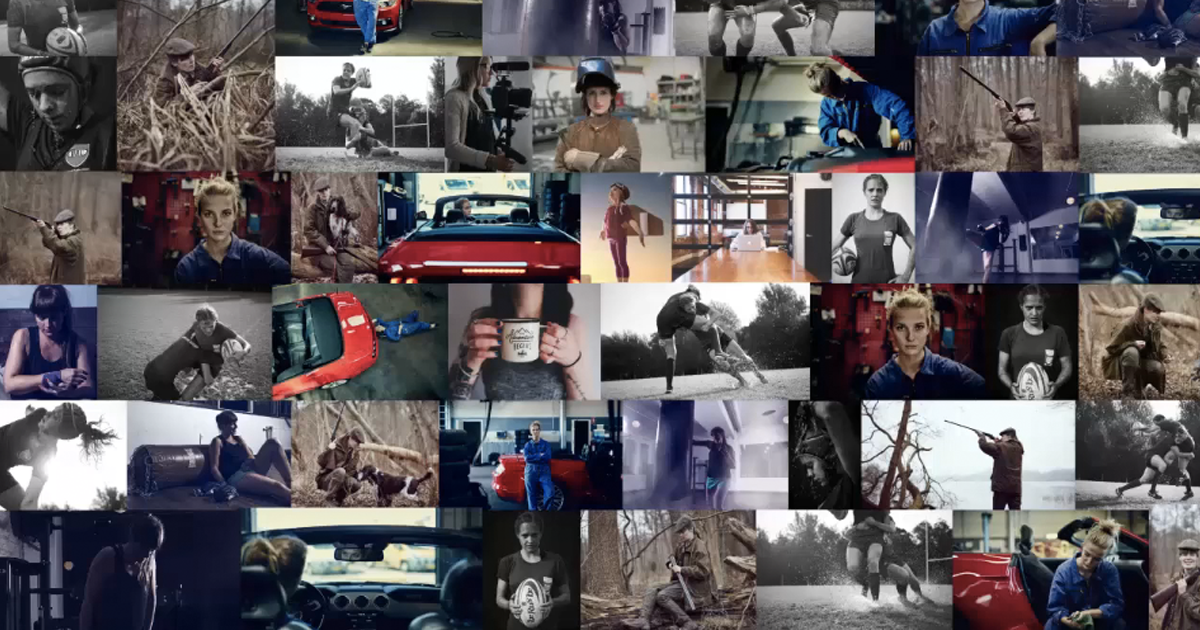I’m usually very suspicious with campaign case studies when award season is approaching. And this one hits very close to home given my previous experience with stock photography, creative campaigns and FMCG brands targeting and depicting women.
Unilever has done an outstanding awareness job over the years and by now we’re all very familiar with Dove’s brand mission of helping women develop a positive relationship with the way they look. That mission is of course the starting point for any Dove campaign, briefed or unbriefed.
Mindshare in Denmark took Dove’s Global Beauty and Confidence Report from 2016, which states that 68 percent of women can’t identify with the images they see in ads, and decided to do their part to change it. How? By convincing more brands to portray “real women” in their campaigns. How? By improving the selection of stock photography their agencies have available. How? By “hacking” a stock images site.
Here is the full video where they present the results of the campaign:
Image_Hack Case Study from Awesome pomegranate on Vimeo.
The campaign creates a good case study, but its scope is very limited. Don’t get me wrong: I support Dove’s mission and any effort towards gender equality. But if you, like me, work in marketing, you’ll know that it misses a few points.
I agree with Cindy Gallop’s tweet about the campaign: the change we need must come from the agencies, too. But it won’t be enough, and it will take long. I’ve been to many FMCG campaign meetings where all of us were women, from the big marketing bosses to the top PR executives to the whole agency team. And still, these companies and their agencies create campaigns where women are portrayed to look and behave very differently from the women that create them. Stereotypes are deeply rooted in our collective imaginaries (almost like if successful marketing execs didn’t use home care or beauty care products).
Want to change media images of women, @unilever @Dove @mindshare @MindshareDK? Insist on female ECDs and creatives. https://t.co/WyG1b83DVg
— Cindy Gallop (@cindygallop) April 20, 2017
The problem is not exclusively in stock photography, either. The options offered by image banks are often limited, but that’s why most of the campaigns created by big brands shoot their own images instead of just licensing them. And still, very often, the casting calls are as full of stereotypes as the image bank tagging system.
But of course image banks can do their part, too. A couple of years ago, Getty Images partnered with Lean In to create a collection of “over 6,000 images of female leadership and equal partnership in contemporary work and life“. I loved and still love the initiative: the images are powerful, empowering, contemporary and tagged just right. And, as an initiative that fights for equality, it is planned for the long term.
Major props to our friends at Lean In for partnering with Getty Images to change the way we portray women…. http://t.co/9NJBUF9xRR
— she++ (@sheplusplus) February 14, 2014
Getty Images’ newest stock art collection of fatherhood following the “Lean In Together” campaign is everything. http://t.co/HeDTDlG8mI
— Tam Le (@Tam_Le) June 12, 2015
Getty Image of the Week: “In whatever you do, make a splash.” Explore the Lean In Collection: http://t.co/NOs93wPMBN pic.twitter.com/iiRtIROBd9
— Lean In (@LeanInOrg) July 10, 2014
Like Sheryl Sandberg noted: “You can’t be what you can’t see. In an age where media are all around us, it is critical that images provide examples that both women and men can emulate.”. Let’s keep on working on fighting stereotypes from the platforms that each of us have. But let’s do it seriously, for real, not just for the case study.

